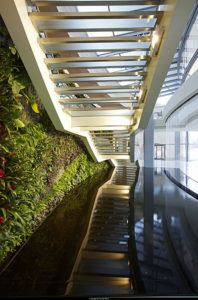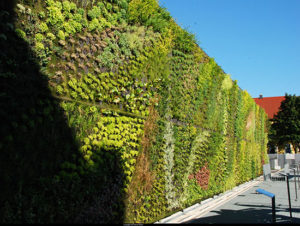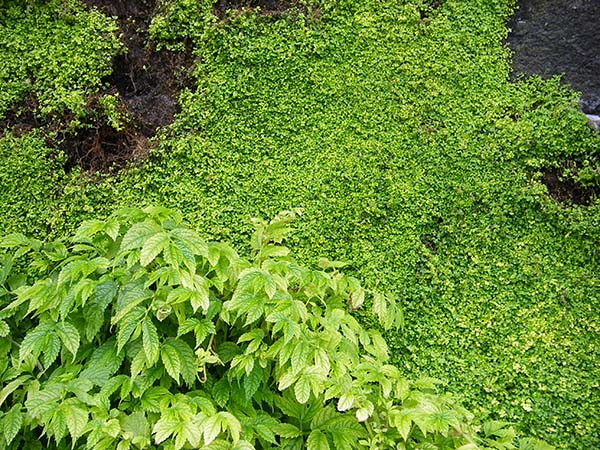Do plants really need soil? No, they don’t…..The soil is merely nothing more than a mechanic support. Only water and the many minerals dissolved in it are essential to plants, together with light and carbon dioxide to conduct photosynthesis.
 Wherever water is available all year long, as in tropical forests or in temperate mountain forests, plants can grow on rocks, tree trunks and soil-less slopes.
Wherever water is available all year long, as in tropical forests or in temperate mountain forests, plants can grow on rocks, tree trunks and soil-less slopes.
In Malaysia, for instance, out of the 8,000 known species, about 2,500 are growing without any soil.
Even in temperate parts of the world, many plants are growing on cliffs, cave entrances, or fallen rocks. On such very steep places grow many Berberis, Spirea and Cotoneaster species. Their naturally curved branches indicate that they originate from naturally steep biotopes and not from flat areas like the gardens where man usually grows them…
Thus, as seen from nature, it is possible for plants to grow on nearly soil-less vertical surfaces as long as there is no permanent water shortage.
Walls and plants, a surprising, though long-lasting combination
 Whenever roots are allowed to grow deep inside a wall, they can easily damage the wall and cause its destruction. That is precisely what happened to the Angkor temples.
Whenever roots are allowed to grow deep inside a wall, they can easily damage the wall and cause its destruction. That is precisely what happened to the Angkor temples.
In Malaysia, for instance, out of the 8,000 known species, about 2,500 are growing without any soil.
This root-related damage can be prevented if water is regularly given to plants. Roots are then only spreading on the surface, leaving the inner wall unaffected. From these observations, and aiming at setting up permanent plant cover on walls with a minimum of maintenance, Patrick Blanc conceived the Vertical Garden.
By Patrick Blanc
This post is available in: English Español

